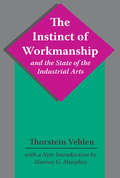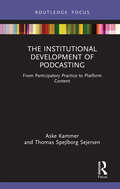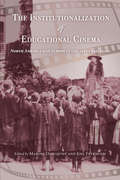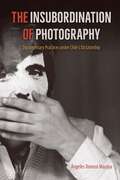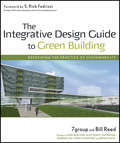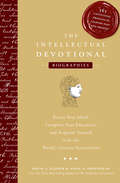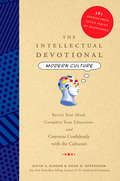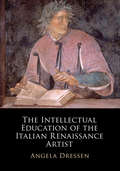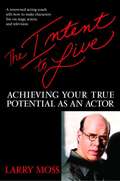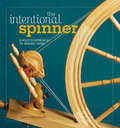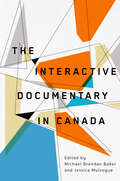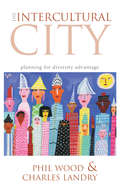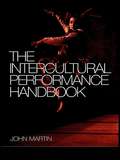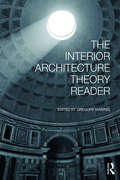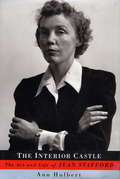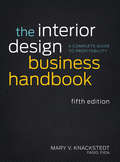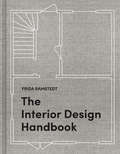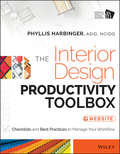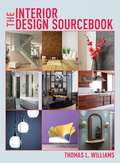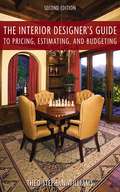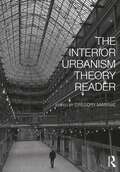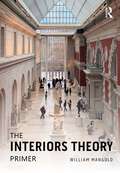- Table View
- List View
The Instinct of Workmanship and the State of the Industrial Arts
by Thorstein VeblenThe Instinct of Workmanship and the State of the Industrial Arts, originally issued in 1914, is described by Murray Murphey as his "most important work." In this volume that the theoretical foundations are put forth on full display. Veblen's juxtaposition of the instinctive values of community welfare in contrast to the pecuniary values of commercial exchange was the basis of his later, more famous works. The book makes plain Veblen's basic dichotomy between technological institutions for making goods and the pecuniary institutions for making money.Veblen's book is taken up with the casual processes in the history of culture centered on human instincts and habits. For him, a change in the natural or social conditions produces effects only by changing the behavior of people. The whole panoply of habits, instincts, and motives, points to a theory of social and cultural change which substantially differs from the pragmatic tradition that swept America in the early decades of this century. Veblen makes so many unique contributions and insights that his work outlives the limitations of its theoretical shell.As is the case for most Veblen's works, footnotes and references are sparse, no index is provided, and the reader is left to fill in the missing paraphernalia the way one does with a novel. Indeed, the reader is swept along Veblen's captivating rhetoric in seven brilliant chapters moving from the instincts in primitive technology, to the current state of industrial arts, to the examination of predatory culture invited to the civilizational table by the competitive system, and finally into a contrast of handicrafts and machine industry.Veblen offers a dramaturgy and a morality of the industrial order of his time: much has changed, but a great deal remains the same and is easily identifiable by the discerning reader. In this passage through text and time, Murphey is the perfect guide, displaying a keen knowledge of philosophy, psychology
The Institutional Development of Podcasting: From Participatory Practice to Platform Content (Disruptions)
by Aske Kammer Thomas Spejlborg SejersenReferring back to the early 2000s, this book traces the development of podcasting from a “do-it-yourself” medium by amateurs into its current environment, where a wide variety of individuals, organizations, and platforms operate in an increasingly crowded and competitive market.Through original case studies of shows and platforms including "The Daily" and Spotify, the authors explore the processes and effects of commercialization, platformization, and datafication in the industry. Drawing on institutional theory and the growing body of scholarly literature about podcasting, they examine the shifts and reorientations in institutional logics that characterize podcasting and present the different types of actors that operate in the commercial and noncommercial podcast markets.The Institutional Development of Podcasting will be of interest to advanced students and researchers of audio media, journalism, and media industries.
The Institutionalization of Educational Cinema: North America and Europe in the 1910s and 1920s
by Marina Dahlquist and Joel FrykholmEssays by scholars on how film has been used by schools, libraries, governments, and organizations for educational purposes.The potential of films to educate has been crucial for the development of cinema intended to influence culture, and is as important as conceptions of film as a form of art, science, industry, or entertainment. Using the concept of institutionalization as a heuristic for generating new approaches to the history of educational cinema, contributors to this volume study the co-evolving discourses, cultural practices, technical standards, and institutional frameworks that transformed educational cinema from a convincing idea into an enduring genre. The Institutionalization of Educational Cinema examines the methods of production, distribution, and exhibition established for the use of educational films within institutions—such as schools, libraries, and industrial settings—in various national and international contexts and takes a close look at the networks of organizations, individuals, and government agencies that were created as a result of these films’ circulation. Through case studies of educational cinemas in different North American and European countries that explore various modes of institutionalization of educational film, this book highlights the wide range of vested interests that framed the birth of educational and nontheatrical cinema.
The Institutionalization of Educational Cinema: North America and Europe in the 1910s and 1920s
by Marina Dahlquist and Joel FrykholmEssays by scholars on how film has been used by schools, libraries, governments, and organizations for educational purposes.The potential of films to educate has been crucial for the development of cinema intended to influence culture, and is as important as conceptions of film as a form of art, science, industry, or entertainment. Using the concept of institutionalization as a heuristic for generating new approaches to the history of educational cinema, contributors to this volume study the co-evolving discourses, cultural practices, technical standards, and institutional frameworks that transformed educational cinema from a convincing idea into an enduring genre. The Institutionalization of Educational Cinema examines the methods of production, distribution, and exhibition established for the use of educational films within institutions—such as schools, libraries, and industrial settings—in various national and international contexts and takes a close look at the networks of organizations, individuals, and government agencies that were created as a result of these films’ circulation. Through case studies of educational cinemas in different North American and European countries that explore various modes of institutionalization of educational film, this book highlights the wide range of vested interests that framed the birth of educational and nontheatrical cinema.
The Insubordination of Photography: Documentary Practices under Chile's Dictatorship (Reframing Media, Technology, and Culture in Latin/o America)
by Ángeles Donoso MacayaLatin American Studies Association Visual Culture Section Best Book PrizeLatin American Studies Association Historia Reciente y Memoria Section Best Book PrizeThe role of documentary photography in exposing and protesting the crimes of a dictatorship After Augusto Pinochet rose to power in Chile in 1973, his government abducted, abused, and executed thousands of his political opponents. The Insubordination of Photography is the first book to analyze how various collectives, organizations, and independent media used photography to expose and protest the crimes of Pinochet’s authoritarian regime. Ángeles Donoso Macaya discusses the ways human rights groups such as the Vicariate of Solidarity used portraits of missing persons in order to make forced disappearances visible. She also calls attention to forensic photographs that served as incriminating evidence of government killings in the landmark Lonquén case. Donoso Macaya argues that the field of documentary photography in Chile was challenged and shaped by the precariousness of the nation’s politics and economics and shows how photojournalists found creative ways to challenge limitations imposed on the freedom of the press.In a culture saturated by disinformation and cover-ups and restricted by repression and censorship, photography became an essential tool to bring the truth to light. Featuring never-before-seen photographs and other archival material, this book reflects on the integral role of images in public memory and issues of reparation and justice. A volume in the series Reframing Media, Technology, and Culture in Latin/o America, edited by Héctor Fernández L’Hoeste and Juan Carlos Rodríguez Publication of the paperback edition made possible by a Sustaining the Humanities through the American Rescue Plan grant from the National Endowment for the Humanities.
The Integrative Design Guide to Green Building: Redefining the Practice of Sustainabilit
by 7group Bill Reed"The members of 7group and Bill Reed are examples writ large of the kind of leadership that is taking this idea of green building and forming it into reality, by helping change minds, building practice, and design process." —from the Foreword by S. Rick Fedrizzi President, CEO, and Founding Chair, U.S. Green Building Council A whole-building approach to sustainability The integrative design process offers a new path to making better green building decisions and addressing complex issues that threaten living systems. In The Integrative Design Guide to Green Building: Redefining the Practice of Sustainability, 7group's principals and integrative design pioneer Bill Reed introduce design and construction professionals to the concepts of whole building design and whole systems. With integrative thinking that reframes what sustainability means, they provide a how-to guide for architects, designers, engineers, developers, builders, and other professionals on incorporating integrative design into every phase of a project. This practical manual: Explains the philosophy and underpinnings of effective integrative design, addressing systems thinking and building and community design from a whole-living system perspective Details how to implement integrative design from the discovery phase to occupancy, supported by process outlines, itemized tasks, practice examples, case studies, and real-world stories illustrating the nature of this work Explores the deeper understanding of integration that is required to transform architectural practice and our role on the planet This book, both practical and thoughtful, will help you deliver your vision of a sustainable environment. 7group, based in Kutztown, Pennsylvania, includes principals John Boecker, Scot Horst, Tom Keiter, Andrew Lau, Marcus Sheffer, and Brian Toevs, who bring a unique integration of expertise in design, engineering, energy and daylight modeling, materials assessments, commissioning, education, and communications to their work. Internationally recognized thought leaders in the green building movement, they have led countless teams through the practical implementation of integrative design on building projects of all types around the world. 7group also has been directly and deeply involved with the development of the LEED® Green Building Rating System, including experience on more than 100 LEED projects. Scot Horst currently serves as chair of the U.S. Green Building Council's LEED Steering Committee.
The Intellectual Devotional: Revive Your Mind, Complete Your Education, and Acquaint Yourself with the World' s Greatest Personalities (The Intellectual Devotional Series)
by David S. Kidder Noah D. OppenheimThe fifth installment of this bestselling series features 365 captivating entries about the most celebrated personalities in history. <P><P>Like its compulsively readable predecessors, The Intellectual Devotional: Biographies is organized into seven categories, one for each day of the week. With their trademark wit and style, authors David Kidder and Noah Oppenheim offer an array of fascinating facts about major figures from Atilla the Hun to Desmond Tutu. <P>In this daily devotional, learn about: <br>• authors and artists, from Homer and Ovid to Oscar Wilde and Virginia Woolf• leaders, such as Queen Elizabeth I, Abraham Lincoln, Susan B. Anthony, and Napoleon Bonaparte <br>• innovators, from Johannes Gutenberg to Isaac Newton to Werner Heisenberg• philosophers, including Socrates, Epicurus, Friedrich Nietzsche, and Jean-Paul Sartre <br>• rebels and reformers, from Joan of Arc and Spartacus to Galileo and Che Guevara <br>• preachers and prophets, including Lao-tzu, John the Baptist, Martin Luther, and Gandhi <br>• villains, such as Benedict Arnold, Genghis Khan, Ivan the Terrible, and Jack the Ripper <P>This volume shares the personal histories, accomplishments,and troubles of 365 people who have left an indelible mark on the world.
The Intellectual Devotional: Revive Your Mind, Complete Your Education, and Converse Confidently with the Cul turati (The Intellectual Devotional Series)
by David S. Kidder Noah D. OppenheimIn the tradition of the instant bestsellers The Intellectual Devotional and The Intellectual Devotional: American History comes the third installment in this indispensable series. <P><P> In The Intellectual Devotional: Modern Culture, authors David S. Kidder and Noah D. Oppenheim explore the fascinating world of contemporary culture to offer 365 daily readings that provide the essential references needed to navigate the world today. <P><P>Quench your intellectual thirst with an overview of the literature, music, film, personalities, trends, sports, and pop references that have defined the way we live. From the Slinky to Star Wars; Beatlemania to Babe Ruth; flappers to fascism—refreshing your memory and dazzling your friends has never been easier, or more fun. <P>Whether you're a trivia genius, pop-culture buff, or avid reader, you'll be riveted by this comprehensive journey through contemporary culture.
The Intellectual Education of the Italian Renaissance Artist
by Angela DressenScholars have traditionally viewed the Italian Renaissance artist as a gifted, but poorly educated craftsman whose complex and demanding works were created with the assistance of a more educated advisor. These assumptions are, in part, based on research that has focused primarily on the artist's social rank and workshop training. In this volume, Angela Dressen explores the range of educational opportunities that were available to the Italian Renaissance artist. Considering artistic formation within the history of education, Dressen focuses on the training of highly skilled, average artists, revealing a general level of learning that was much more substantial than has been assumed. She emphasizes the role of mediators who had a particular interest in augmenting artists' knowledge, and highlights how artists used Latin and vernacular texts to gain additional knowledge that they avidly sought. Dressen's volume brings new insights into a topic at the intersection of early modern intellectual, educational, and art history.
The Intent to Live: Achieving Your True Potential as an Actor
by Larry Moss"I call this book The Intent to Live because great actors don't seem to be acting, they seem to be actually living." -Larry Moss, from the Introduction. When Oscar-winning actors Helen Hunt and Hilary Swank accepted their Academy Awards, each credited Larry Moss's guidance as key to their career-making performances.
The Intentional Spinner: A Holistic Approach To Making Yarn
by Judith MackenzieOffering a blend of technical knowledge, history, and easy-to-use tips, this inspiring collection of spinning wisdom deftly explores the three fundamental areas of yarn production: understanding fibers, managing yarn structure, and making yarns that precisely meet the spinner's needs. The rich, historic traditions of plant and animal fibers are fascinatingly juxtaposed with recent advances in synthesized fiber and mankind's use of fibers in the past, present, and future, while detailed, image-laden instructions for four intermediate projects demonstrate the range of possibilities, from sturdy, plied yarns to playful, novelty yarns. Spinners are also offered guidance on planning a project from start to finish, as well as how to care for and store completed projects.
The Interactive Documentary in Canada
by Michael Brendan Baker and Jessica MulvogueInteractive documentary emerged rapidly from a constellation of changing technologies and practices to much excitement, yet its history is short and its future uncertain. In the mid-2010s Canada was a world leader in the creation of i-docs. Less than a decade later technological obsolescence has rendered many of these celebrated projects inaccessible, while rapid digital innovation continues to change the i-doc form and its modes of experience.The Interactive Documentary in Canada captures this transitional moment in documentary filmmaking and media production. Bringing together a range of historical, theoretical, and critical approaches, this collection examines the past – and the imagined future – of a nonfiction storytelling phenomenon that has Canadian institutions, figures, and works at its centre. Embracing a polyphonic conception of interactive documentary, the volume includes explorations of web-based, app-based, installation, and virtual reality works that push the boundaries of what is understood as documentary cinema. Leading documentary scholars and makers consider the historical and technological contexts of i-doc production, innovation, and exhibition; the political and pedagogical potential of the genre; the ethics of the i‐doc experience; and the format’s future lifespan in the contemporary media landscape.The Interactive Documentary in Canada establishes a place for the i-doc in the history of Canadian film, highlighting the genre’s significant impact on the National Film Board of Canada and on contemporary global documentary media.
The Intercultural City: Planning for Diversity Advantage
by Phil Wood Charles LandryIn a world of increasing mobility, how people of different cultures live together is a key issue of our age, especially for those responsible for planning and running cities. New thinking is needed on how diverse communities can cooperate in productive harmony instead of leading parallel or antagonistic lives. Policy is often dominated by mitigating the perceived negative effects of diversity, and little thought is given to how adiversity dividend or increased innovative capacity might be achieved. The Intercultural City, based on numerous case studies worldwide, analyses the links between urban change and cultural diversity. It draws on original research in the US, Europe, Australasia and the UK. It critiques past and current policy and introduces new conceptual frameworks. It provides significant and practical advice for readers, with new insights and tools for practitioners such as theintercultural lensindicators of opennessurban cultural literacy andten steps to an Intercultural City. Published with Comedia.
The Intercultural Performance Handbook
by John MartinThe Intercultural Performance Handbook opens up a new world of technique for performers. The first ever full-length, fully illustrated manual for practitioners, it provides:*a guide to the physical, vocal and improvisational dynamics drawn from world performance styles*a new vocabulary with which to interpret plays from around the globe*games to use for exploring rhythm, movement, balance, tension and gesture, breathwork, stylisation and the use of the voice*a practical approach to creating vibrant theatrical work.Studies on intercultural performance are usually written by scholars and reasearchers. John Martin explains the definition and development of intercultural performance studies from the perspective of an experienced practitioner. He provides exercises, practical advice and a clear training process for the inquiring actor or director.This book is a process of discovery, carefully written so as to develop understanding and move towards empowerment for the adventurous theatre-maker.
The Interface: IBM and the Transformation of Corporate Design, 1945–1976 (A Quadrant Book)
by John Harwood"In February 1956 the president of IBM, Thomas Watson Jr., hired the industrial designer and architect Eliot F. Noyes, charging him with reinventing IBM&’s corporate image, from stationery and curtains to products such as typewriters and computers and to laboratory and administration buildings. What followed—a story told in full for the first time in John Harwood&’s The Interface—remade IBM in a way that would also transform the relationships between design, computer science, and corporate culture. IBM&’s program assembled a cast of leading figures in American design: Noyes, Charles Eames, Paul Rand, George Nelson, and Edgar Kaufmann Jr. The Interface offers a detailed account of the key role these designers played in shaping both the computer and the multinational corporation. Harwood describes a surprising inverse effect: the influence of computer and corporation on the theory and practice of design. Here we see how, in the period stretching from the &“invention&” of the computer during World War II to the appearance of the personal computer in the mid-1970s, disciplines once well outside the realm of architectural design—information and management theory, cybernetics, ergonomics, computer science—became integral aspects of design.As the first critical history of the industrial design of the computer, of Eliot Noyes&’s career, and of some of the most important work of the Office of Charles and Ray Eames, The Interface supplies a crucial chapter in the story of architecture and design in postwar America—and an invaluable perspective on the computer and corporate cultures of today."
The Interior Architecture Theory Reader
by Gregory MarinicThe Interior Architecture Theory Reader presents a global compilation that collectively and specifically defines interior architecture. Diverse views and comparative resources for interior architecture students, educators, scholars, and practitioners are needed to develop a proper canon for this young discipline. As a theoretical survey of interior architecture, the book examines theory, history, and production to embrace a full range of interior identities in architecture, interior design, digital fabrication, and spatial installation. Authored by leading educators, theorists, and practitioners, fifty chapters refine and expand the discourse surrounding interior architecture.
The Interior Castle
by Ann HulbertAn important moment in American literary history takes life in this stunning biography of Jean Stafford, one of the most successful, admired--and troubled--of the brilliant and influential midcentury circle of writers and critics that included Allen Tate, Caroline Gordon, Peter Taylor, Delmore Schwartz, Randall Jarrell, and Robert Lowell, Stafford's first husband. Ann Hulbert shows us how Stafford, raised in Colorado, the daughter of a failed writer of Westerns, came of literary age in the East, yet fiercely maintained her connection with her provincial background, forging the unique style that marked her highly acclaimed first novel, Boston Adventure; her Masterpiece, The Mountain Lion; her third novel, The Catherine Wheel; and the stories she published in The New Yorker and elsewhere, which were honored in 1970 with a Pulitzer Prize. We follow Stafford through the early experiences to which she returned again and again in her fiction, and which helped shape her disenchanted vision--her father's sudden loss of his fortune; her shame as an adolescent, living in a boardinghouse in Boulder run by her mother; her aesthetic experimentation as a member of the intellectually maverick "Barbarians" at the University of Colorado; her exciting but troubling Wanderjahr in Nazi Germany, where she watched civilization crumbling. We see her take her place as a forceful, attractive, witty, yet also insecure woman among a group of spirited young writers who were learning from and challenging their older mentors--the increasingly powerful Southern critics and the Partisan Review circle in New York. With her marriage to Lowell at twenty-four, she embarked on a feverishly creative but ill-fated coursethat held auguries of his and his fellow poets' tragic paths: she struggled with Catholicism, confronted domestic violence, battled with alcoholism and mental instability, and throughout it all wrote formally impeccable fiction. And we see her as she finds some happiness with her third husband, the writer A. J. Liebling, part of the New Yorker world that had become her home in the late 1940s. Throughout, we are made aware of Stafford's constant search for a bastion of order--a safe place, an escape from the unsettling sense of vulnerability that engulfed her, an interior castle--from which to approach her life and her art.
The Interior Design Business Handbook: A Complete Guide to Profitability
by Mary V. KnackstedtThousands of interior design professionals have come to rely on The Interior Design Business Handbook for comprehensive, accessible coverage of the essential procedures, tools, and techniques necessary to manage a successful interior design business. The Fifth Edition of this essential resource has been revised to address the latest trends and changes in the field, with new and updated material on business size and structure, building a brand, client development, social networking and Internet marketing, finances, purchasing, technology and software programs, and other key areas. Complete with more than 75 sample forms and letters, this Fifth Edition is a one-stop resource for all aspects of establishing and running an interior design business—from choosing a location and managing day-to-day operations to growing a business and putting it up for sale. All of the techniques and procedures in the book are rooted in real-world experience and are used daily in successful design firms throughout the United States. Filled with valuable information for solo practices and small firms as well as larger businesses, this book is an indispensable resource for seasoned professionals as well as interior designers who are at the start of their career.
The Interior Design Handbook: Furnish, Decorate, and Style Your Space
by Frida RamstedtPerfectly necessary for our current times: The new bible of interior design. While we spend more time at home than ever before, learn from the guru who has coached an entire Scandinavian generation in the art of creating a harmonious home.Frida Ramstedt believes in thinking about how we decorate, rather than focusing on what we decorate with. We know more today than ever before about design trends, furniture, and knickknacks, and now Frida familiarizes readers with the basic principles behind interior and styling--what looks good and, most of all, why it looks good.The Interior Design Handbook teaches you general rules of thumb--like what the golden ratio and the golden spiral are, the proper size for a coffee table in relation to your sofa, the optimal height to hang lighting fixtures, and the best ways to use a mood board--complete with helpful illustrations. Use The Interior Design Handbook to achieve a balanced, beautiful home no matter where you live or what your style is.
The Interior Design Handbook: Furnish, Decorate, and Style Your Space
by Frida RamstedtThe new comprehensive bible of interior design, from a home styling guru who has coached an entire Scandinavian generation in the art of creating a harmonious home. Frida Ramstedt believes in thinking about how we decorate, rather than focusing on what we decorate with. We know more today than ever before about design trends, furniture, and knickknacks, and now Frida familiarizes readers with the basic principles behind interior and styling—what looks good and, most of all, why it looks good.The Interior Design Handbook teaches you general rules of thumb—like what the golden ratio and the golden spiral are, the proper size for a coffee table in relation to your sofa, the optimal height to hang lighting fixtures, and the best ways to use a mood board—complete with helpful illustrations. Use The Interior Design Handbook to achieve a balanced, beautiful home no matter where you live or what your style is.
The Interior Design Productivity Toolbox: Checklists and Best Practices to Manage Your Workflow
by Phyllis HarbingerGet organized and streamline your workflow with this A-Z accountability system. Design is only part of an interior designer’s job—you’re also responsible for scheduling client meetings, conducting design surveys, creating drawings and specs, and overseeing installation. Multiply by the number of projects on your plate, and you have a recipe for overwhelming disorganization. The Interior Design Productivity Toolbox helps you juggle multiple projects with ease, with a comprehensive self-management system tailored to the needs of interior designers and decorators. Features include: Detailed checklists that highlight weak spots and warn against common pitfalls Covers residential design, contract design, specifications, and renovations Best practices for meetings, design surveys, drawings, specifications, and renovations Customizable online checklists for tracking every phase of your project Exclusive online budgeting tool for tracking product costs and associated expenses to share with your team and your clients If you need to get organized and get back to work, you need The Interior Design Productivity Toolbox.
The Interior Design Sourcebook
by Thomas L. WilliamsConcrete that is light and translucent, fabric that responds to its environment by lighting up, tiles that can be moved from place to place at will-these are just a few of the updated entries you'll find in The Interior Design Directory. The book is divided into four parts, opening with a section on classic, composite materials including wood and stone, brick, and ceramic, then moving on to building materials that have been refined and updated for home use from glass, concrete, and metal to rubber and tiles. The final section is devoted to sustainable materials and the environmental impact of our choices. Photographs of contemporary interiors and detailed close-ups of each material make this as visually inspiring as it is practical.
The Interior Designer's Guide to Pricing, Estimating, and Budgeting
by Theo Stephen WilliamsThis second edition is updated throughout and includes additional material on time management and numerous interviews with leading designers. Empowered by the step-by-step guidance in this book, interior designers will be able to establish prices and budgets that make their clients happy and their businesses profitable. Written by a designer and veteran expert on pricing, estimating, and budgeting systems, the book provides practical guidelines on how to value the cost of designing commercial or residential interiors, from the designer's creative input to the pricing of decorating products and procedures.The book shows how to determine a profitable and fair hourly rate, balance the client's budget with his or her wishes and needs, negotiate prices with suppliers and contractors, write realistic estimates and clear proposals, manage budgets for projects of all sizes and types, and position the firm's brand in relation to its practices. Interviews with experienced interior designers, case studies, and sidebars highlight professional pitfalls and how to master them, from daily crisis management and self-organization to finding the perfect office manager.
The Interior Urbanism Theory Reader
by Gregory MarinicThe Interior Urbanism Theory Reader expands our understanding of urbanism, interiority, and publicness from a global perspective across time and cultures. From ancient origins to speculative futures, this book explores the rich complexities of interior urbanism as an interstitial socio-spatial condition. Employing an interdisciplinary lens, it examines the intersectional characteristics that define interior urbanism. Fifty chapters investigate the topic in relation to architecture, planning, urban design, interior architecture, interior design, archaeology, engineering, sociology, psychology, and geography. Individual essays reveal the historical, typological, and morphological origins of interior urbanism, as well as its diverse scales, occupancies, and atmospheres. The Interior Urbanism Theory Reader will appeal to scholars, practitioners, students, and enthusiasts of urbanism, architecture, planning, interiors, and the social sciences.
The Interiors Theory Primer
by William MangoldIn a world where life is increasingly defined by the spaces we inhabit, understanding interiors is essential to understanding ourselves. The Interiors Theory Primer maps the intellectual terrain of interior design and spatial experience, introducing readers to key concepts that shape how people occupy interior spaces.Organized into three parts, this book begins with foundational concerns, such as place, identity, materiality, and atmosphere, and then examines the boundaries and expertise of the discipline, before turning to critical and emerging topics like biophilia, virtuality, and social justice. Each chapter presents a focused literature review of a major theme in interiors theory, supported by key design precedents and suggestions for further reading. Drawing on a wide range of scholarship, The Interiors Theory Primer offers a coherent framework for understanding interiors as a distinct, interdisciplinary field deeply embedded in the human condition.Accessible to students, useful to professionals, and provocative for scholars, The Interiors Theory Primer argues that the designed environments in which we live, work, and gather deserve greater attention—not only for their aesthetic and functional qualities but also for their powerful role in shaping contemporary life.
